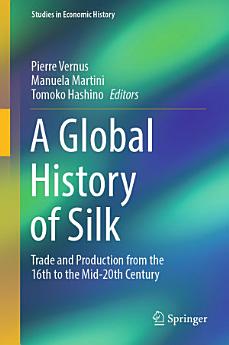A Global History of Silk: Trade and Production from the 16th to the Mid-20th Century
About this ebook
The book is divided into three parts, the first of which features contributions on silk markets and trade, covering topics such as auction sales and Sino-European trade. The second part addresses issues of work organization, institutional developments and the gendered division of labour, discussing topics such as systems of home-based and factory production and the organization of quality control. In turn, the third part highlights technological innovations and knowledge transfer. This book appeals to scholars and students of economic history who are interested in a better understanding of the key features and patterns in the development of the silk industry and trade and, more widely, in the global economic history of the early modern and modern periods.
About the author
Pierre Vernus is an associate professor of modern history at University Lumière Lyon 2 (France). His research focuses on economic and business history and on digital history. He directed and participated in several French or international collective research projects on businessmen, business interest organizations, and silk heritage. He authored or edited several books including Art, luxe et industrie. Bianchini Férier, un siècle de soieries lyonnaises, 1888–1992 [Art, luxury and industry. Bianchini Férier, a century of Lyon silkwares, 1888–1992]. Presses universitaires de Grenoble, 2006.
Manuela Martini is a professor of modern history at the University Lumière Lyon 2 (France) and a senior member of the Institut Universitaire de France. She belongs to the editorial collective of Gender & History and has published extensively in French, Italian, Spanish, German, and English on European economic history, gender history, and international labour migrations. Her recent publications on the history of labour and textile industry include the edited book Textile knots. Remunerations, Labour Relations and Gender in Europe during the Industrialization (18th–early 20th century), Brepols, 2024, forthcoming.
Tomoko Hashino is a professor of economic history at Kobe University (Japan). Her research interests are in the evolutionary process of the textile industry as well as the comparative development history of weaving districts in modern Japan. She coedited the book Industrial Districts in History and the Developing World, published by Springer in 2016. Her articles appear in Economic History Review, Business History Review, Australian Economic History Review, and Journal of the Japanese and International Economies. She received her Ph.D. in economics from Hitotsubashi University in 2003 and has been a visiting fellow at the University of New South Wales, the London School of Economics, George Washington University, Stanford University, University of Cape Town, and Université Lyon 2.




